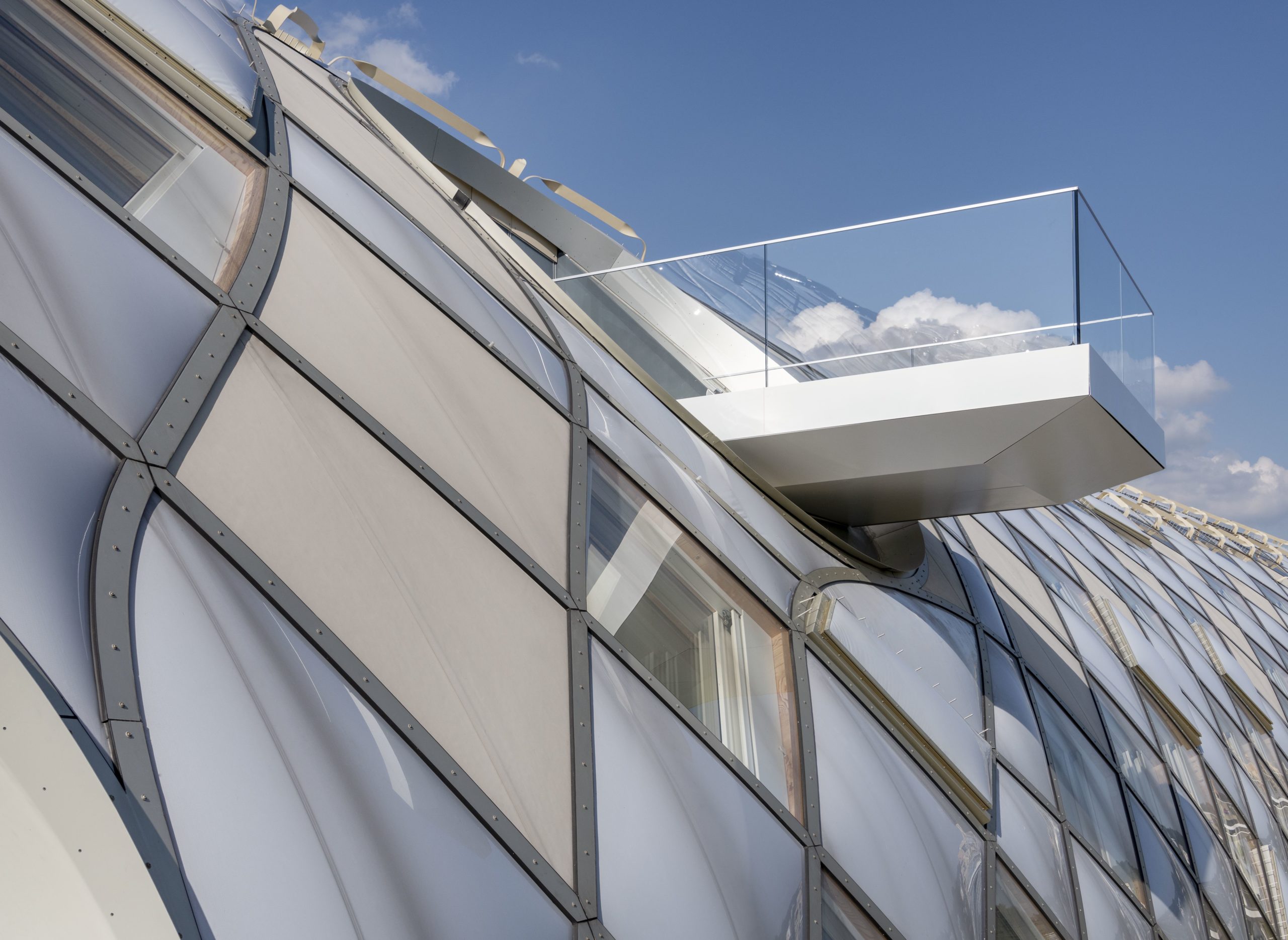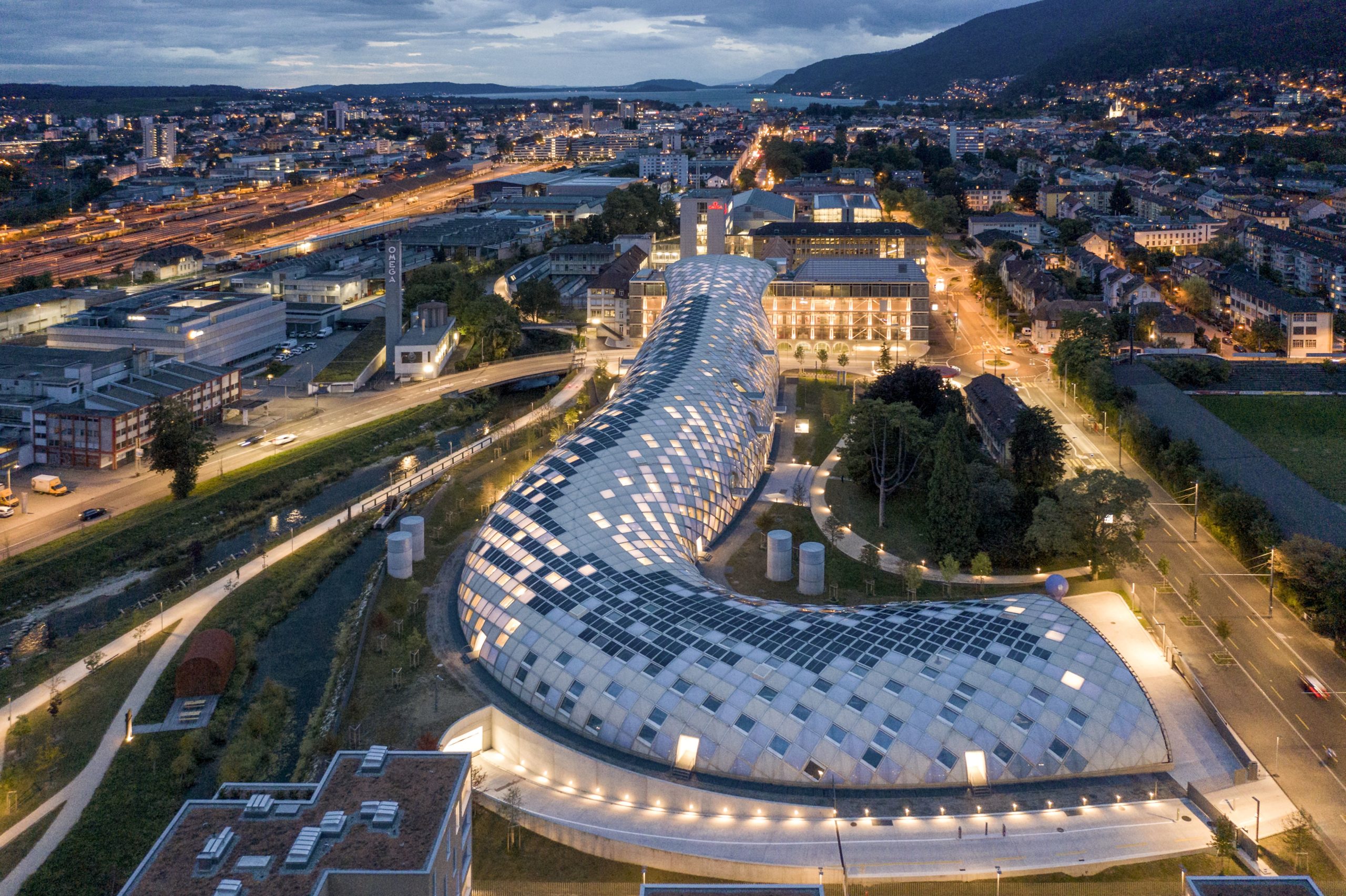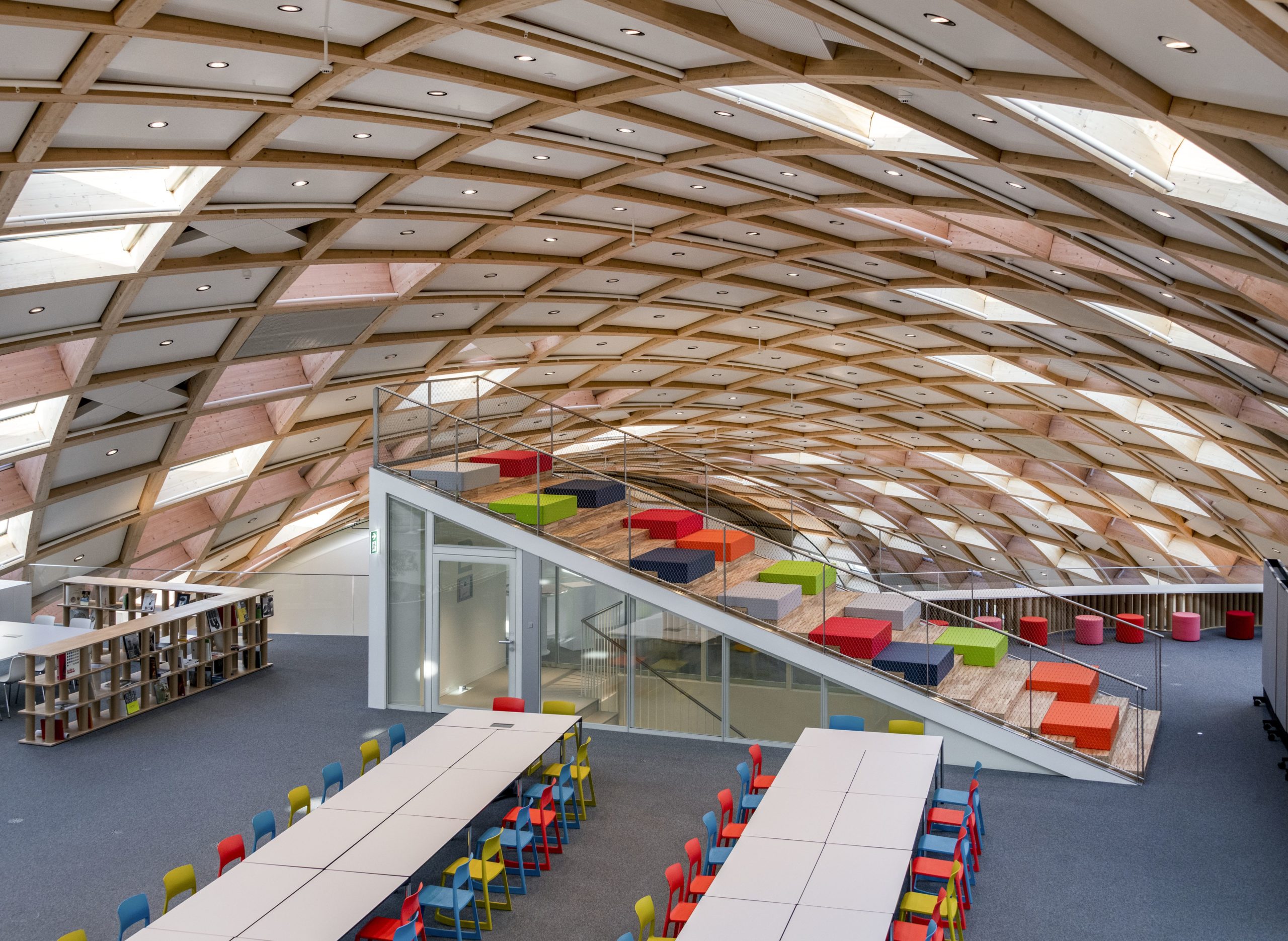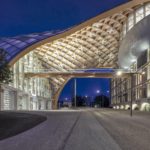Company:
Taiyo Europe GmbH
Project Details
Fabric 1
ETFE
Producer/Manufacturer:
Nowofol GmbH
Primary Use:
Main Fabric
Engineer Company 1
Taiyo Europe GmbH and LEICHT Structural Engineering + Special Consulting (modular roof/façade frame elements); SJB KEMPTER FITZE AG, Eschenbach, Switzerland (wood constructions)
Design Company
Shigeru Ban, Shigeru Ban Architects, Tokyo, Japan
Architect Company
Shigeru Ban, Shigeru Ban Architects, Tokyo, Japan; Hayek Engineering, Zurich, Switzerland (owner's representative)
Fabrication Company
TAIYO EUROPE GmbH (ETFE-film cladding and air supply system for modular roof/façade frame elements)
Subcontractor Company
Taiyo Europe GmbH (ETFE membrane elements)
Project Manager Company
Eng. Koffi Alate and Dr. Karsten Moritz, Taiyo Europe GmbH
Installation Company
Taiyo Europe GmbH
Please describe the project specifications
The extraordinary quality of the design lies in the façade of the new building. It is dynamic, innovative, transparent and future-oriented. Every company wants these attributes not only to be associated with their products, but also to be expressed centrally through their company and their headquarters.
The amorphous facade design also gives the building its shape and structure. The design as a load-bearing timber grid shell, equipped with spatially curved, multifunctional and modular timber frames, forms an ecological and sustainable building concept that is second to none.
While the timber structure was still being erected, the installation of the 2800 modules in total, which take up most of the façade area, began. Each of these modules was composed of many different individual parts depending on its function and fitted in accordance with its intended position on the building.
Some modules are opaque, others are translucent or transparent, depending on the function and location of their installation. The opaque modules are used for sun protection and sound absorption. Some of these modules can be opened for smoke extraction, while others are equipped with photovoltaic cells.
The 965 translucent module consists of two ETFE foils, between which a bended (double curved) translucent polycarbonate plate was installed to improve thermal insulation. Four panes of glass were used for the transparent module. The weather-protected cavity between the panes offers enough space for movable textile sun protection. In order to avoid condensate, air also flows through these modules as CCF (closed cavity facade).
The multifunctionality of the modules as well as the individual and complex geometry of each individual module presented a major challenge in spite of the very precise manufacture of the timber grid shell and the timber module frame - both for planning and development, as well as for production and assembly.
All individual parts were carefully assembled in the factory, checked for airtightness and finally precisely fitted to the structure.
What is unique or complex about the project?
A new development and application of membrane construction can be seen in this structure. In addition to the textile sail surfaces, the modular, multifunctional and multi-layer construction will become increasingly important. Both, films and textiles, are increasingly being combined with other materials and components (photovoltaics, sun protection, hot water generation, etc.). We are able to meet the highest demands on building physics, statics and architecture with this technology. The SWATCH OMEGA HEADQUATERS project impressively demonstrates these possibilities. The diversity of membrane types and the great elasticity of the membrane materials are a great advantage over solid materials, especially in cases of complex geometries. The architect made a conscious decision to use ETFE-foils for this project. Due to the synclastic curvature of air inflated foils, they shape the building’s envelope in a particularly attractive way. No other material would be able to fulfil both, the technical requirements and the architectural intention of the architect.
Content is submitted by the participant. IFAI is not responsible for the content descriptions of the IAA award winners.




 TEXTILES.ORG
TEXTILES.ORG






